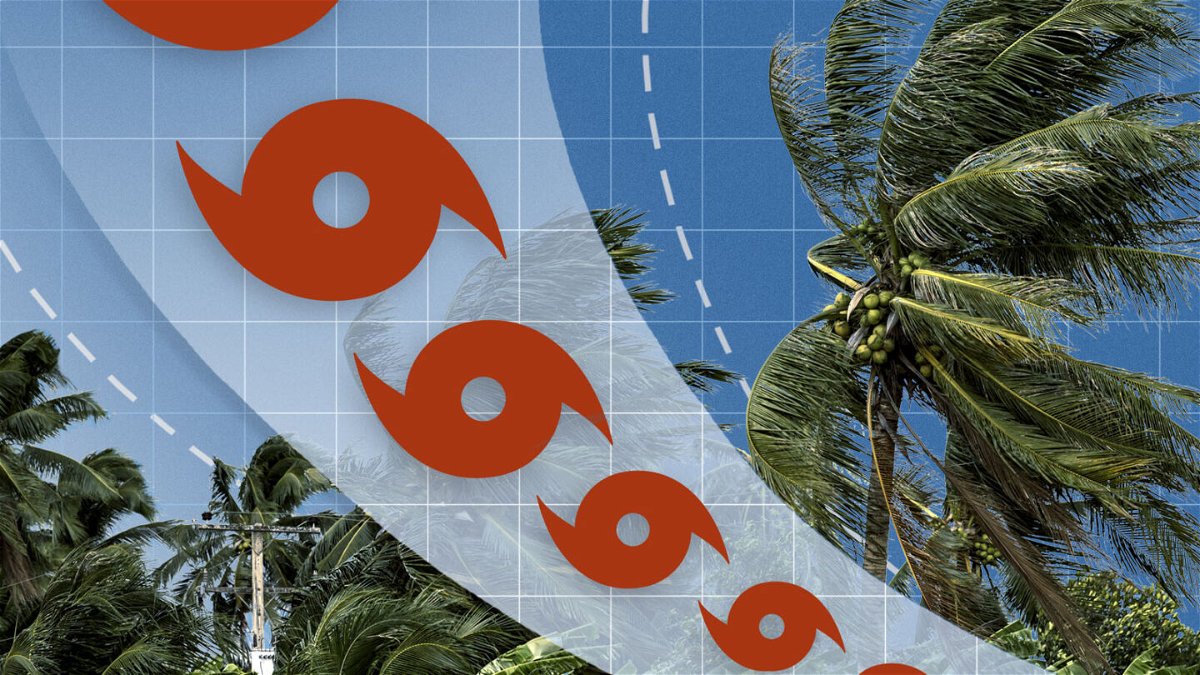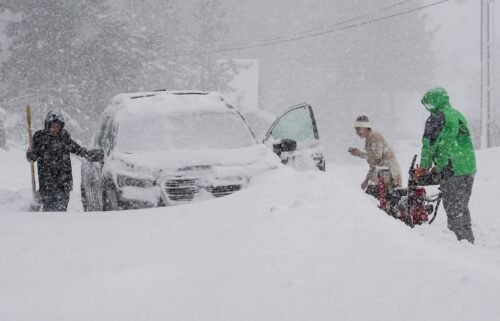Atlantic hurricane season will remain above-normal, NOAA says in updated predictions

This Atlantic hurricane season is still expected to be above-normal
By Payton Major and Allison Chinchar, CNN Meteorologists
This Atlantic hurricane season is still expected to be above-normal, forecasts released Thursday by the National Oceanic and Atmospheric Administration and Colorado State University show.
Though this season has been less active until now compared to the last two seasons, NOAA and Colorado State expect it to become the seventh consecutive above-normal hurricane season.
“Although it has been a relatively slow start to hurricane season, with no major storms developing in the Atlantic, this is not unusual and we therefore cannot afford to let our guard down,” FEMA Administrator Deanne Criswell said. “This is especially important as we enter peak hurricane season — the next Ida or Sandy could still be lying in wait.”
NOAA’s latest projections call for a 60% chance of an above-normal season. Its forecast calls for 14 to 20 named storms (winds of 39 mph or greater), a slight decrease from the seasonal outlook forecast of 14 to 21 released in May. The forecast includes the three named storms that have already formed this season: Alex, Bonnie and Colin.
Of predicted named storms, forecasters believe six to 10 will be hurricanes (winds of 74 mph or higher) and three to five will be major hurricanes (winds of 111 mph or higher).
NOAA’s previous outlook showed a 65% chance of an above-normal season, with six to 10 hurricanes and three to six major hurricanes.
“While we are now two months into the 2022 Atlantic hurricane season, about 90% of all hurricanes and 95% of major hurricanes in the Atlantic occur after the 1st of August, on average,” said Phil Klotzbach, a research scientist at Colorado State.
An average Atlantic hurricane season has 14 named storms, seven hurricanes, and three major hurricanes. The season runs from June 1 to November 30.
Colorado State’s Tropical Meteorology Project team update calls for 18 named storms this hurricane season — one lower than it forecast in April but four more than the annual average.
Of the 18 total predicted storms — which also include the three names already used this season — eight are expected to become hurricanes, and four are expected to become major hurricanes of Category 3 or higher.
“One reason for (the) reduction in Atlantic seasonal hurricane forecast from CSU is due to development of below-normal sea surface temperatures in subtropical Atlantic,” Klotzbach said. “When the subtropical Atlantic is cooler than normal, it can sometimes favor increased shear in the tropical Atlantic.”
The probability of a major hurricane making landfall along the US coastline is now 68%, well above the average of 52% for the past century, according to the Colorado State report.
“You can get very active years with this kind of lull period,” said Matthew Rosencrans of NOAA’s Climate Prediction Center. “2021 did have a low period in July, and then after August 11, then we had about 2.4 storms, on average, form every single week.”
Why the forecast numbers change
These forecasts take into account a lot, such as sea-surface temperatures, La Niña and Saharan dust, and some factors can change quickly.
“One reason for reduction in Atlantic seasonal #hurricane forecast from CSU is due to development of below-normal sea surface temperatures in subtropical Atlantic,” Klotzbach tweeted. “When the subtropical Atlantic is cooler than normal, it can sometimes favor increased shear in the tropical Atlantic.”
The world is in a La Niña pattern — a main reason forecasters initially went with above-average hurricane activity estimates early in the season. La Niña pattern is a natural ocean-atmospheric phenomenon marked by cooler-than-average sea surface temperatures across the central and eastern Pacific Ocean near the equator that consequently impact weather across the world.
While La Niña is certainly a big seasonal driver of how the tropical weather should play out, other phenomena that drive shorter-term variability are also key to updated forecasts.
“The Madden-Julian oscillation can either increase or decrease Atlantic hurricane activity,” Klotzbach has said. “The MJO is deep thunderstorm activity that propagates around the globe every about 30 to 60 days. As it does so, it can alter levels of vertical wind shear and mid-level moisture.”
Saharan dust and dry air have also been key contributors over the last month. The MJO has prohibited thunderstorm development over Africa — important because thunderstorms that form in western Africa tend to flow west into the Atlantic, becoming the building blocks of tropical weather development.
Forecasters are confident changes will soon foster an uptick in tropical systems.
“The models are generally forecasting a more conducive pattern for the Atlantic by the time that we get to the middle of August,” Klotzbach reported. “Air is forecast to more consistently rise over Africa and sink over the tropical Pacific. This pattern should result in reduced vertical wind shear.”
This means environmental conditions will become ideal just in time for peak hurricane season.
Gulf and East coasts face higher risks
With only three named storms so far this year, the season is off to a slower start compared to last year, which had five named storms by this date. However, it is important to point out that even the 2021 season experienced a monthlong summer lull until Tropical Storm Fred formed on August 11.
Hurricanes are becoming more dangerous. Here’s why >>>
Climatologically, about 30% of all Atlantic hurricanes make US landfall. But that statistic doesn’t always adequately reflect an eventful season.
“It’s important to understand that it doesn’t matter if there’s 20 storms or one; if it impacts you, it’s a busy season,” CNN meteorologist Haley Brink said.
For the Gulf Coast, the probability of a major hurricane landfall for the remainder of this season is 43%, exceeding the full-season average of 30% for the last century, according to Colorado State research.
For the East Coast, from Maine to Florida, the probability is also 43%, which is above its annual average of 31% for the last 100 years.
Statistics like those demonstrate why it is important to start preparing now by reviewing evacuation plans and ensuring evacuation kits are in order.
The-CNN-Wire
™ & © 2022 Cable News Network, Inc., a Warner Bros. Discovery Company. All rights reserved.




